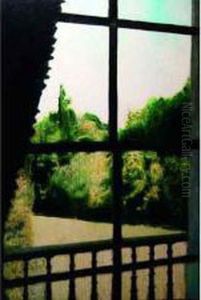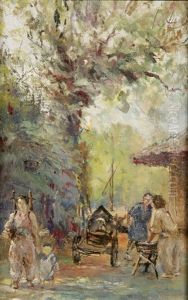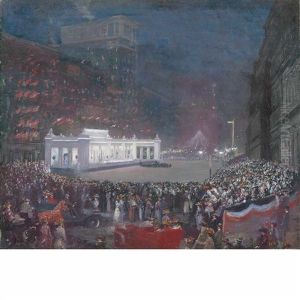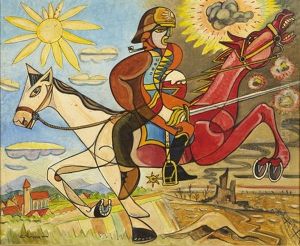Louis Charles Vogt Paintings
Louis Charles Vogt was an American painter, known for his landscape and maritime scenes, as well as his skill in capturing the atmospheric conditions of his environments. Born on July 17, 1864, in Cincinnati, Ohio, Vogt developed an interest in art at a young age. He began his art education at the Cincinnati Art School and later went on to study at the Art Students League in New York City. His early work was influenced by the Munich school of painting, which was characterized by dark tonalities and a focus on realism.
Vogt's travels played a significant role in his artistic development. He spent time in Europe, where he was influenced by the Impressionists and their use of light and color. After returning to the United States, he settled in New York but continued to travel throughout the country, painting landscapes from Maine to California. Vogt's work often depicted the American wilderness, coastal scenes, and rural countrysides. He was particularly adept at capturing the changing seasons and the various atmospheric conditions such as the luminous effects of sunlight and the moods of different times of day.
During his career, Louis Charles Vogt exhibited his work at various institutions and galleries, including the National Academy of Design and the Cincinnati Art Museum. His paintings were well-received, and he gained a reputation for his ability to evoke the spirit of the American landscape. Vogt's work is now part of several important collections and continues to be appreciated for its contribution to American landscape painting.
Louis Charles Vogt passed away in 1939, leaving behind a legacy of artwork that captured the beauty and diversity of the American environment. His paintings remain a testament to his skill as a painter and his dedication to exploring and documenting the natural world around him.

























